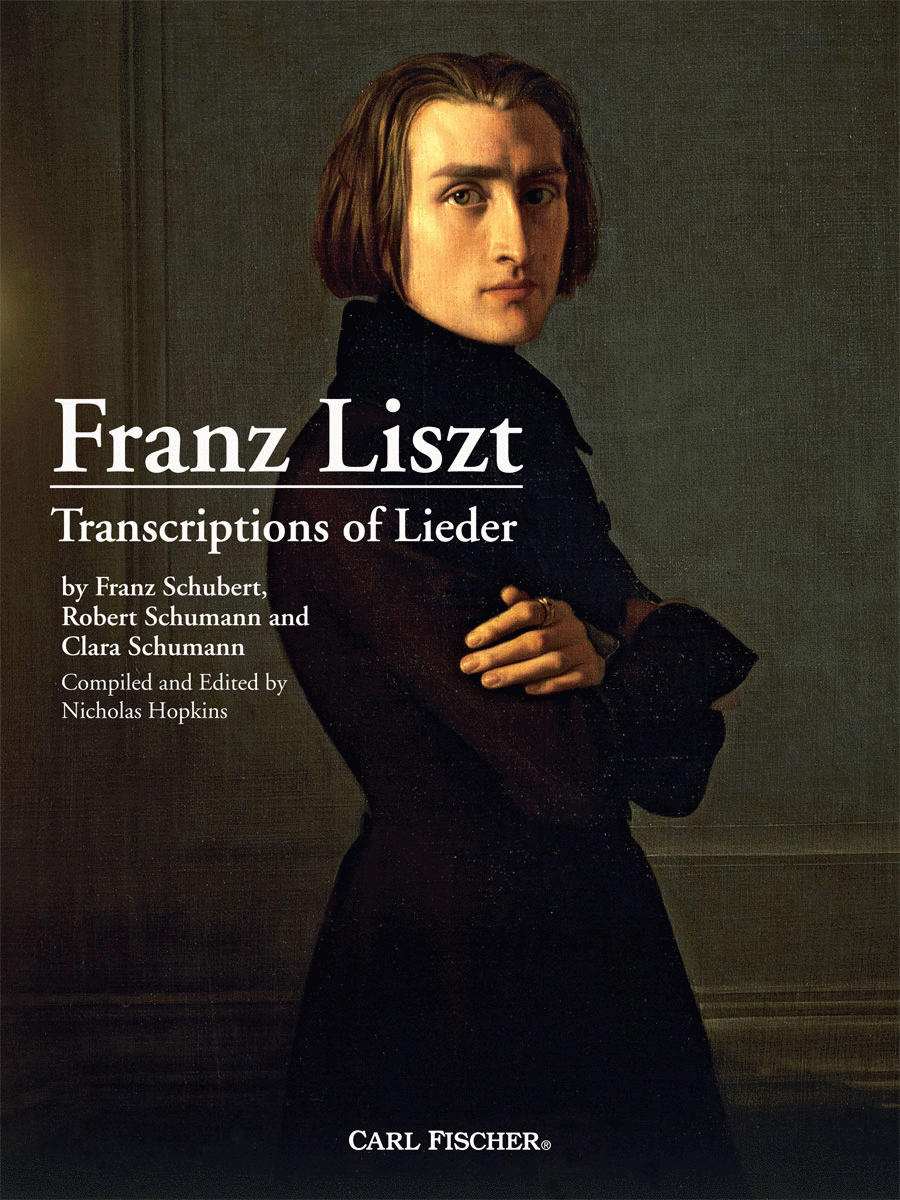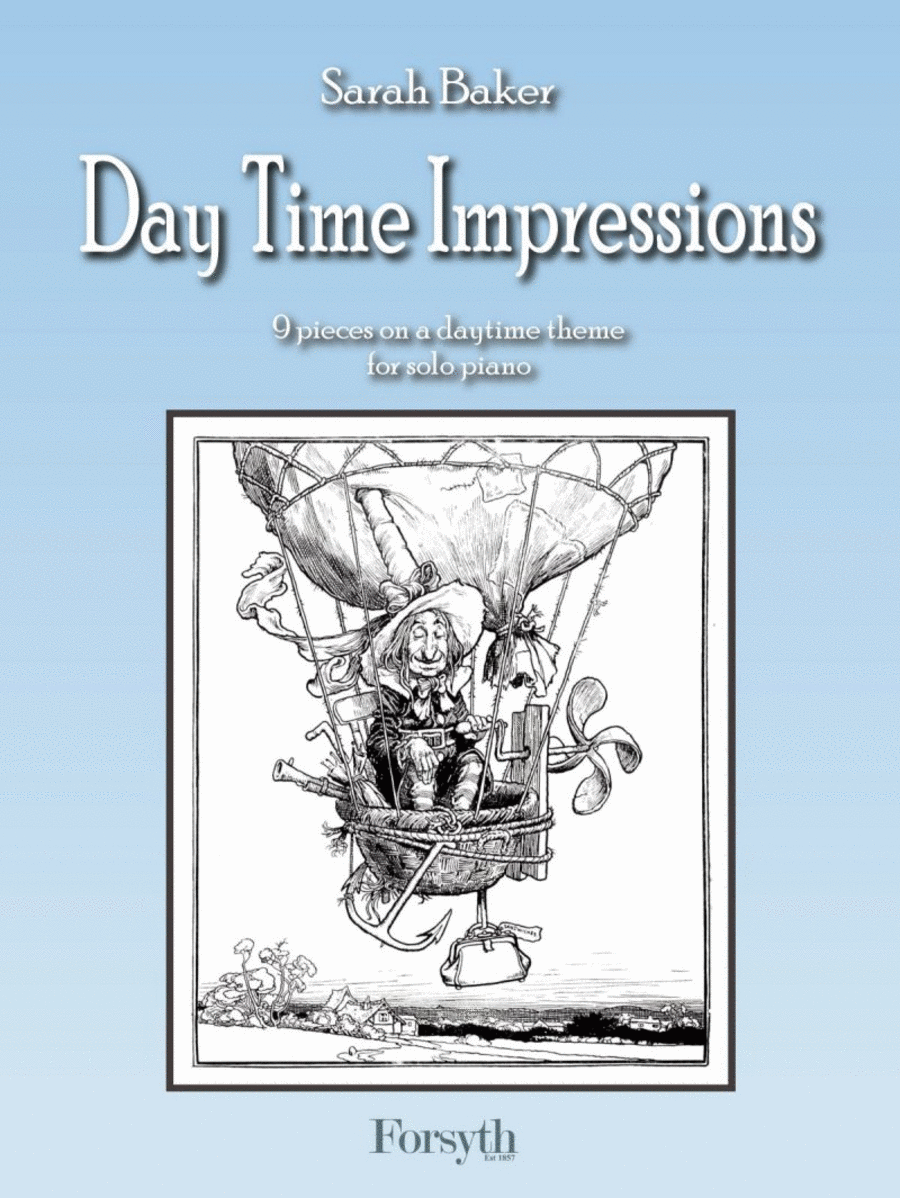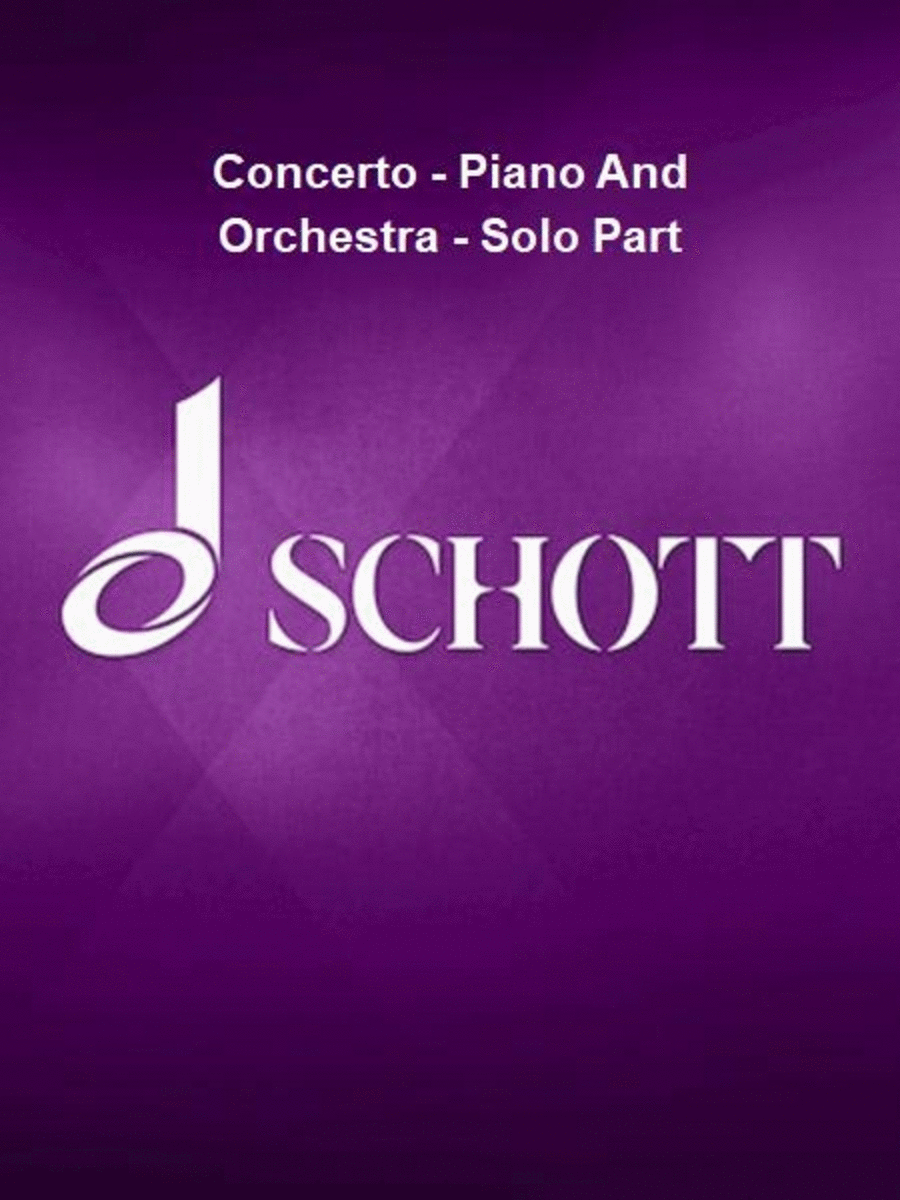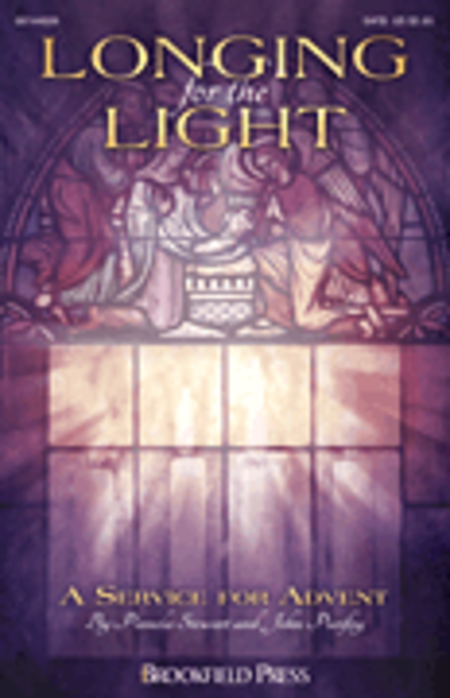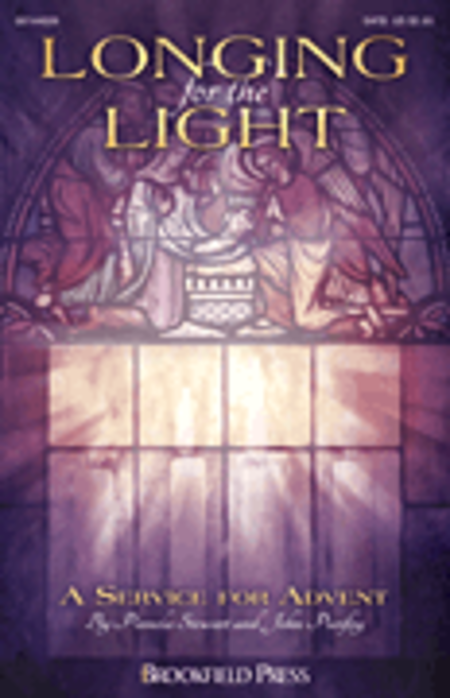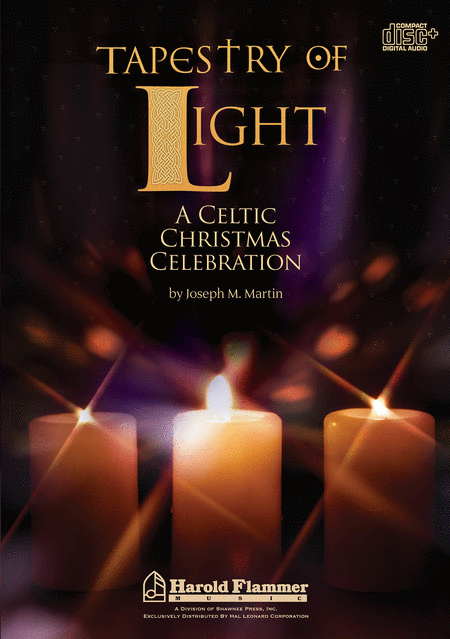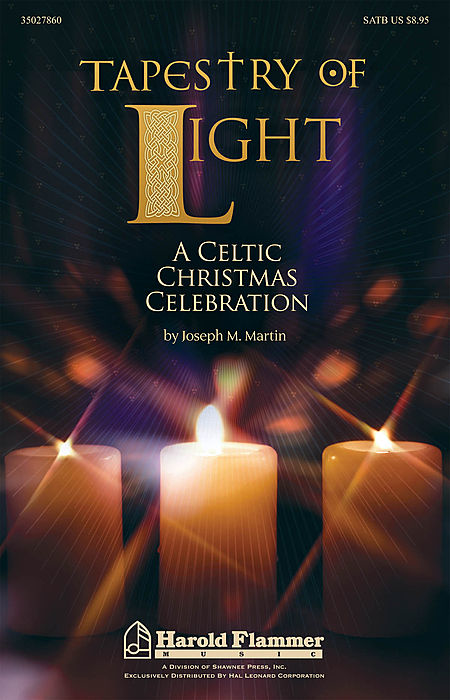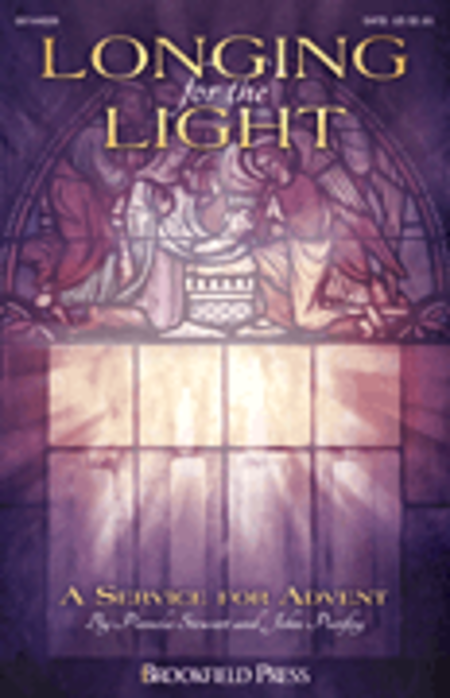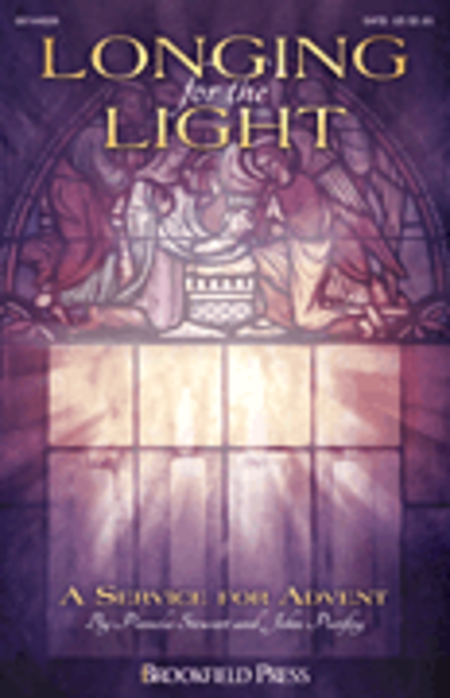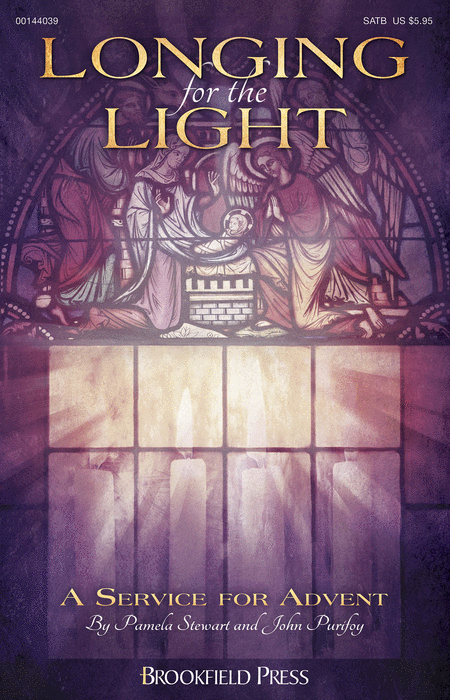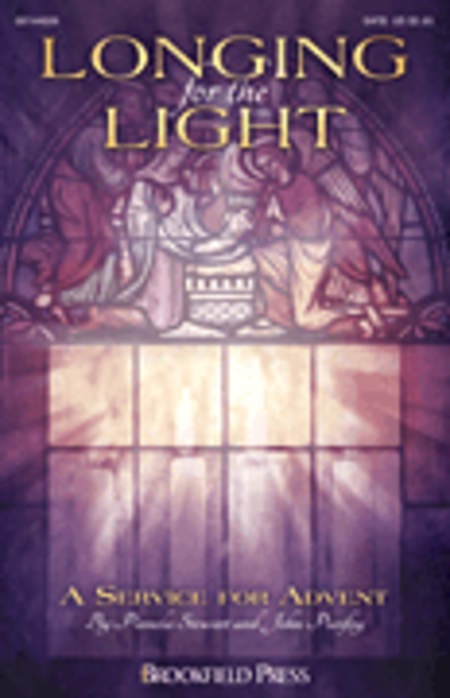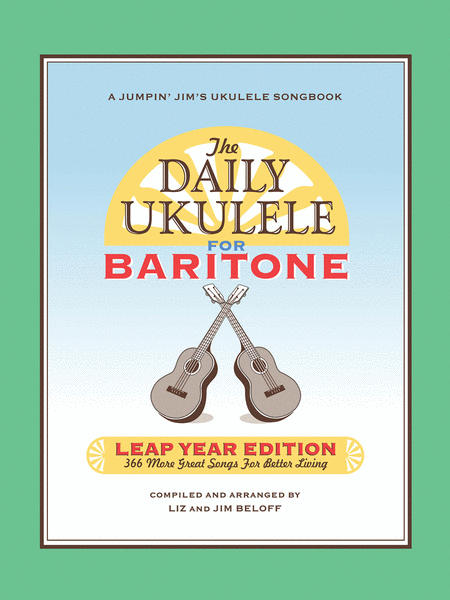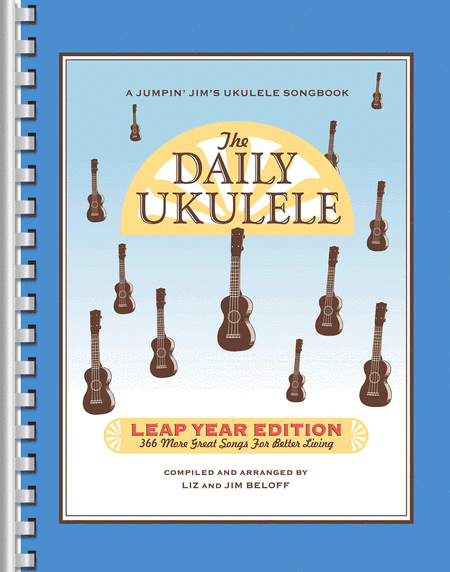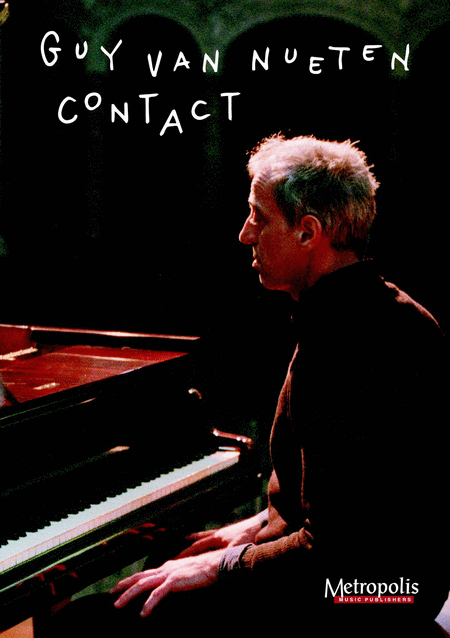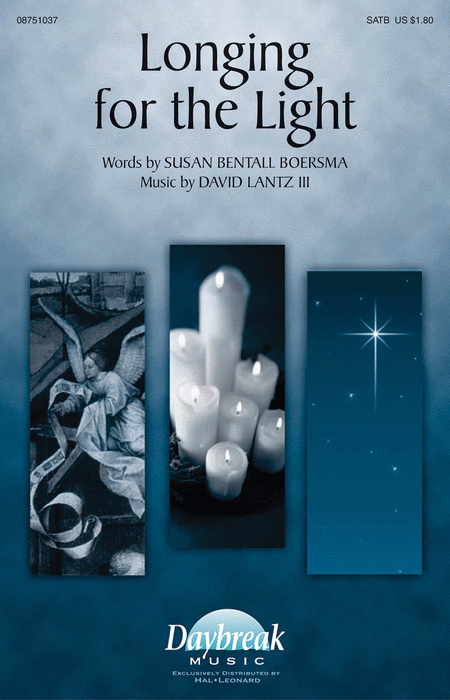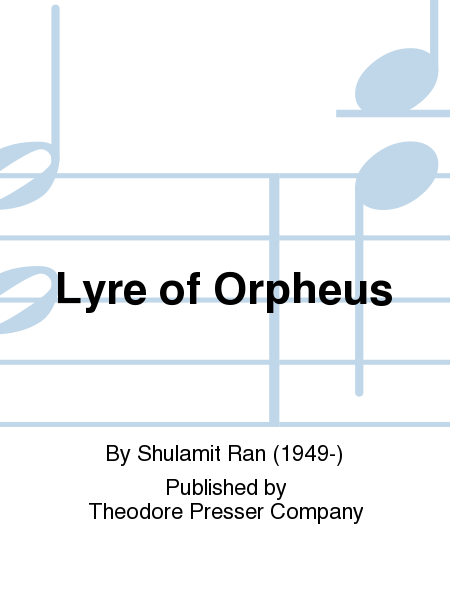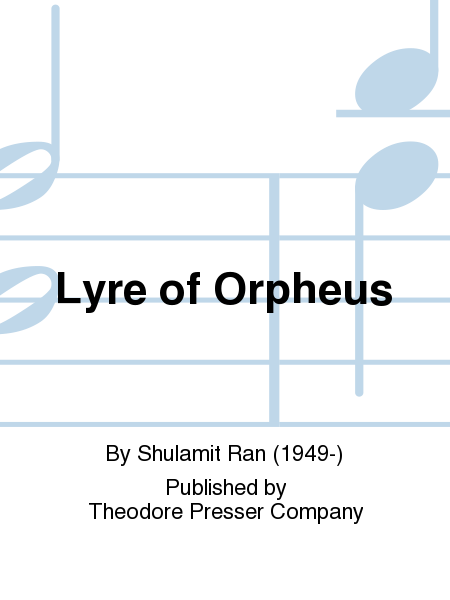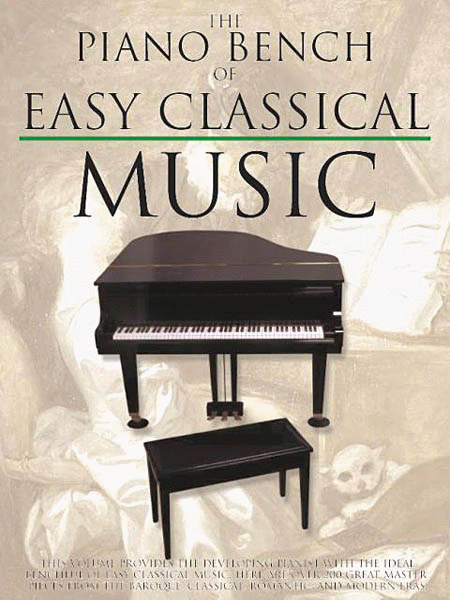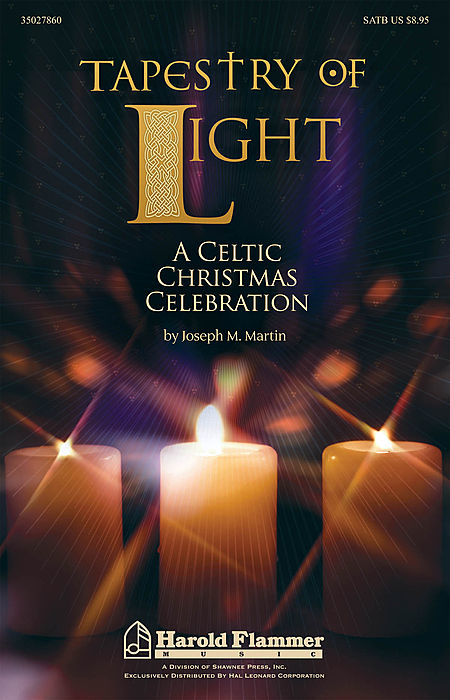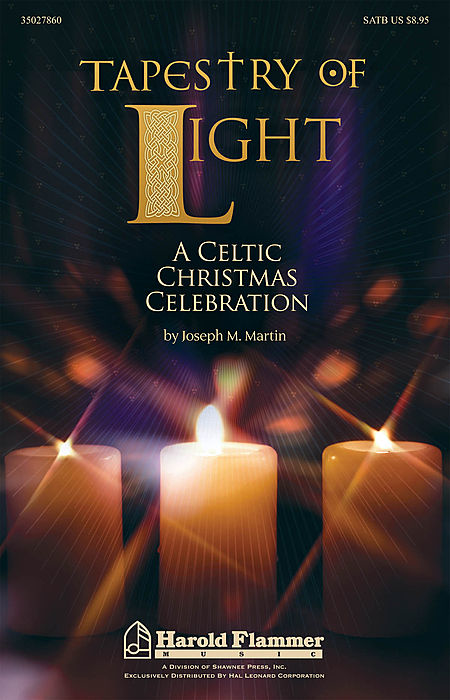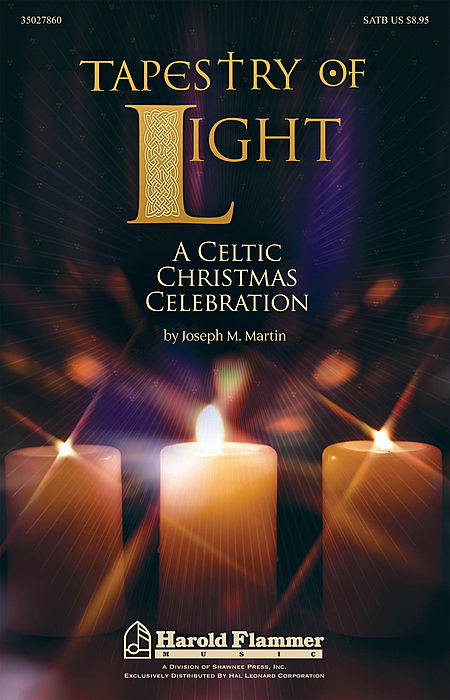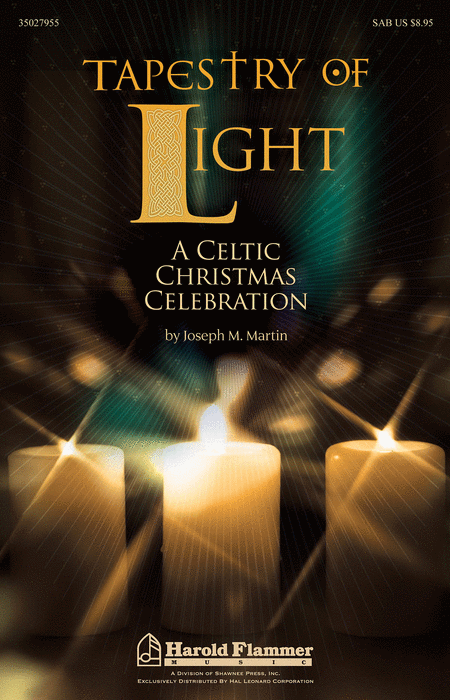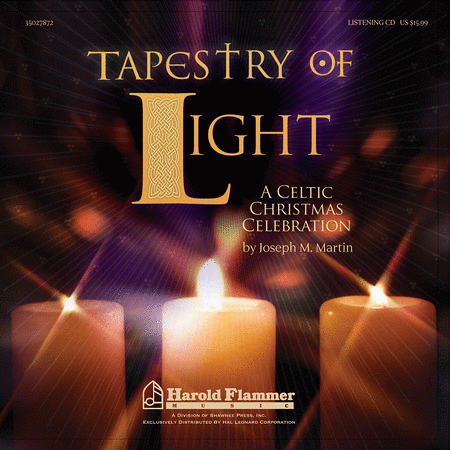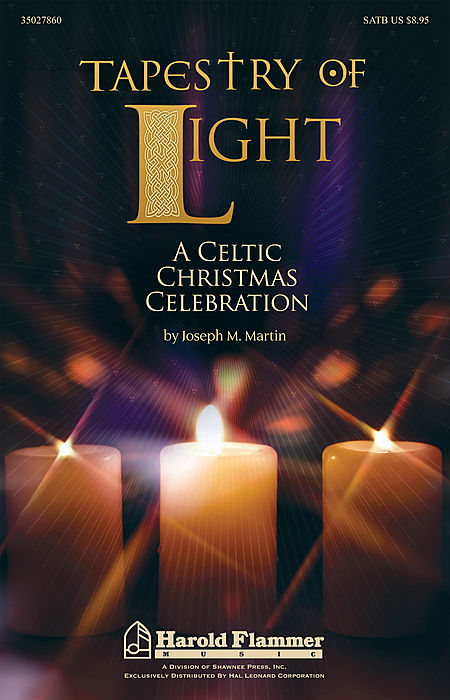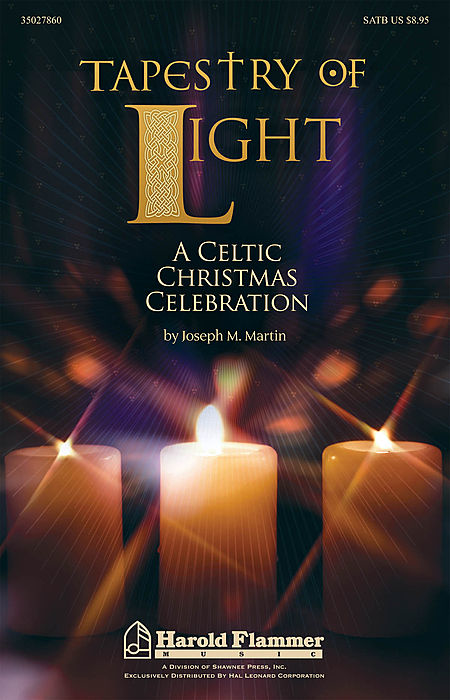|
| Transcriptions of Lieder
Piano seul
Carl Fischer
Chamber Music Piano SKU: CF.PL1056 Composed by Clara Wieck-Schumann, Fran...(+)
Chamber Music Piano
SKU: CF.PL1056
Composed by Clara
Wieck-Schumann, Franz
Schubert, and Robert
Schumann. Edited by
Nicholas Hopkins.
Collection. With Standard
notation. 128 pages. Carl
Fischer Music #PL1056.
Published by Carl Fischer
Music (CF.PL1056).
ISBN 9781491153390.
UPC: 680160910892.
Transcribed by Franz
Liszt. Introduction
It is true that Schubert
himself is somewhat to
blame for the very
unsatisfactory manner in
which his admirable piano
pieces are treated. He
was too immoderately
productive, wrote
incessantly, mixing
insignificant with
important things, grand
things with mediocre
work, paid no heed to
criticism, and always
soared on his wings. Like
a bird in the air, he
lived in music and sang
in angelic fashion.
--Franz Liszt, letter to
Dr. S. Lebert (1868) Of
those compositions that
greatly interest me,
there are only Chopin's
and yours. --Franz Liszt,
letter to Robert Schumann
(1838) She [Clara
Schumann] was astounded
at hearing me. Her
compositions are really
very remarkable,
especially for a woman.
There is a hundred times
more creativity and real
feeling in them than in
all the past and present
fantasias by Thalberg.
--Franz Liszt, letter to
Marie d'Agoult (1838)
Chretien Urhan
(1790-1845) was a
Belgian-born violinist,
organist and composer who
flourished in the musical
life of Paris in the
early nineteenth century.
According to various
accounts, he was deeply
religious, harshly
ascetic and wildly
eccentric, though revered
by many important and
influential members of
the Parisian musical
community. Regrettably,
history has forgotten
Urhan's many musical
achievements, the most
important of which was
arguably his pioneering
work in promoting the
music of Franz Schubert.
He devoted much of his
energies to championing
Schubert's music, which
at the time was unknown
outside of Vienna.
Undoubtedly, Urhan was
responsible for
stimulating this
enthusiasm in Franz
Liszt; Liszt regularly
heard Urhan's organ
playing in the
St.-Vincent-de-Paul
church in Paris, and the
two became personal
acquaintances. At
eighteen years of age,
Liszt was on the verge of
establishing himself as
the foremost pianist in
Europe, and this
awakening to Schubert's
music would prove to be a
profound experience.
Liszt's first travels
outside of his native
provincial Hungary were
to Vienna in 1821-1823,
where his father enrolled
him in studies with Carl
Czerny (piano) and
Antonio Salieri (music
theory). Both men had
important involvements
with Schubert; Czerny
(like Urhan) as performer
and advocate of
Schubert's music and
Salieri as his theory and
composition teacher from
1813-1817. Curiously,
Liszt and Schubert never
met personally, despite
their geographical
proximity in Vienna
during these years.
Inevitably, legends later
arose that the two had
been personal
acquaintances, although
Liszt would dismiss these
as fallacious: I never
knew Schubert personally,
he was once quoted as
saying. Liszt's initial
exposure to Schubert's
music was the Lieder,
what Urhan prized most of
all. He accompanied the
tenor Benedict
Randhartinger in numerous
performances of
Schubert's Lieder and
then, perhaps realizing
that he could benefit the
composer more on his own
terms, transcribed a
number of the Lieder for
piano solo. Many of these
transcriptions he would
perform himself on
concert tour during the
so-called Glanzzeit, or
time of splendor from
1839-1847. This publicity
did much to promote
reception of Schubert's
music throughout Europe.
Once Liszt retired from
the concert stage and
settled in Weimar as a
conductor in the 1840s,
he continued to perform
Schubert's orchestral
music, his Symphony No. 9
being a particular
favorite, and is credited
with giving the world
premiere performance of
Schubert's opera Alfonso
und Estrella in 1854. At
this time, he
contemplated writing a
biography of the
composer, which
regrettably remained
uncompleted. Liszt's
devotion to Schubert
would never waver.
Liszt's relationship with
Robert and Clara Schumann
was far different and far
more complicated; by
contrast, they were all
personal acquaintances.
What began as a
relationship of mutual
respect and admiration
soon deteriorated into
one of jealousy and
hostility, particularly
on the Schumann's part.
Liszt's initial contact
with Robert's music
happened long before they
had met personally, when
Liszt published an
analysis of Schumann's
piano music for the
Gazette musicale in 1837,
a gesture that earned
Robert's deep
appreciation. In the
following year Clara met
Liszt during a concert
tour in Vienna and
presented him with more
of Schumann's piano
music. Clara and her
father Friedrich Wieck,
who accompanied Clara on
her concert tours, were
quite taken by Liszt: We
have heard Liszt. He can
be compared to no other
player...he arouses
fright and astonishment.
His appearance at the
piano is indescribable.
He is an original...he is
absorbed by the piano.
Liszt, too, was impressed
with Clara--at first the
energy, intelligence and
accuracy of her piano
playing and later her
compositions--to the
extent that he dedicated
to her the 1838 version
of his Etudes d'execution
transcendante d'apres
Paganini. Liszt had a
closer personal
relationship with Clara
than with Robert until
the two men finally met
in 1840. Schumann was
astounded by Liszt's
piano playing. He wrote
to Clara that Liszt had
played like a god and had
inspired indescribable
furor of applause. His
review of Liszt even
included a heroic
personification with
Napoleon. In Leipzig,
Schumann was deeply
impressed with Liszt's
interpretations of his
Noveletten, Op. 21 and
Fantasy in C Major, Op.
17 (dedicated to Liszt),
enthusiastically
observing that, I feel as
if I had known you twenty
years. Yet a variety of
events followed that
diminished Liszt's glory
in the eyes of the
Schumanns. They became
critical of the cult-like
atmosphere that arose
around his recitals, or
Lisztomania as it came to
be called; conceivably,
this could be attributed
to professional jealousy.
Clara, in particular,
came to loathe Liszt,
noting in a letter to
Joseph Joachim, I despise
Liszt from the depths of
my soul. She recorded a
stunning diary entry a
day after Liszt's death,
in which she noted, He
was an eminent keyboard
virtuoso, but a dangerous
example for the
young...As a composer he
was terrible. By
contrast, Liszt did not
share in these negative
sentiments; no evidence
suggests that he had any
ill-regard for the
Schumanns. In Weimar, he
did much to promote
Schumann's music,
conducting performances
of his Scenes from Faust
and Manfred, during a
time in which few
orchestras expressed
interest, and premiered
his opera Genoveva. He
later arranged a benefit
concert for Clara
following Robert's death,
featuring Clara as
soloist in Robert's Piano
Concerto, an event that
must have been
exhilarating to witness.
Regardless, her opinion
of him would never
change, despite his
repeated gestures of
courtesy and respect.
Liszt's relationship with
Schubert was a spiritual
one, with music being the
one and only link between
the two men. That with
the Schumanns was
personal, with music
influenced by a hero
worship that would
aggravate the
relationship over time.
Nonetheless, Liszt would
remain devoted to and
enthusiastic for the
music and achievements of
these composers. He would
be a vital force in
disseminating their music
to a wider audience, as
he would be with many
other composers
throughout his career.
His primary means for
accomplishing this was
the piano transcription.
Liszt and the
Transcription
Transcription versus
Paraphrase Transcription
and paraphrase were
popular terms in
nineteenth-century music,
although certainly not
unique to this period.
Musicians understood that
there were clear
distinctions between
these two terms, but as
is often the case these
distinctions could be
blurred. Transcription,
literally writing over,
entails reworking or
adapting a piece of music
for a performance medium
different from that of
its original; arrangement
is a possible synonym.
Adapting is a key part of
this process, for the
success of a
transcription relies on
the transcriber's ability
to adapt the piece to the
different medium. As a
result, the pre-existing
material is generally
kept intact, recognizable
and intelligible; it is
strict, literal,
objective. Contextual
meaning is maintained in
the process, as are
elements of style and
form. Paraphrase, by
contrast, implies
restating something in a
different manner, as in a
rewording of a document
for reasons of clarity.
In nineteenth-century
music, paraphrasing
indicated elaborating a
piece for purposes of
expressive virtuosity,
often as a vehicle for
showmanship. Variation is
an important element, for
the source material may
be varied as much as the
paraphraser's imagination
will allow; its purpose
is metamorphosis.
Transcription is adapting
and arranging;
paraphrasing is
transforming and
reworking. Transcription
preserves the style of
the original; paraphrase
absorbs the original into
a different style.
Transcription highlights
the original composer;
paraphrase highlights the
paraphraser.
Approximately half of
Liszt's compositional
output falls under the
category of transcription
and paraphrase; it is
noteworthy that he never
used the term
arrangement. Much of his
early compositional
activities were
transcriptions and
paraphrases of works of
other composers, such as
the symphonies of
Beethoven and Berlioz,
vocal music by Schubert,
and operas by Donizetti
and Bellini. It is
conceivable that he
focused so intently on
work of this nature early
in his career as a means
to perfect his
compositional technique,
although transcription
and paraphrase continued
well after the technique
had been mastered; this
might explain why he
drastically revised and
rewrote many of his
original compositions
from the 1830s (such as
the Transcendental Etudes
and Paganini Etudes) in
the 1850s. Charles Rosen,
a sympathetic interpreter
of Liszt's piano works,
observes, The new
revisions of the
Transcendental Etudes are
not revisions but concert
paraphrases of the old,
and their art lies in the
technique of
transformation. The
Paganini etudes are piano
transcriptions of violin
etudes, and the
Transcendental Etudes are
piano transcriptions of
piano etudes. The
principles are the same.
He concludes by noting,
Paraphrase has shaded off
into
composition...Composition
and paraphrase were not
identical for him, but
they were so closely
interwoven that
separation is impossible.
The significance of
transcription and
paraphrase for Liszt the
composer cannot be
overstated, and the
mutual influence of each
needs to be better
understood. Undoubtedly,
Liszt the composer as we
know him today would be
far different had he not
devoted so much of his
career to transcribing
and paraphrasing the
music of others. He was
perhaps one of the first
composers to contend that
transcription and
paraphrase could be
genuine art forms on
equal par with original
pieces; he even claimed
to be the first to use
these two terms to
describe these classes of
arrangements. Despite the
success that Liszt
achieved with this type
of work, others viewed it
with circumspection and
criticism. Robert
Schumann, although deeply
impressed with Liszt's
keyboard virtuosity, was
harsh in his criticisms
of the transcriptions.
Schumann interpreted them
as indicators that
Liszt's virtuosity had
hindered his
compositional development
and suggested that Liszt
transcribed the music of
others to compensate for
his own compositional
deficiencies.
Nonetheless, Liszt's
piano transcriptions,
what he sometimes called
partitions de piano (or
piano scores), were
instrumental in promoting
composers whose music was
unknown at the time or
inaccessible in areas
outside of major European
capitals, areas that
Liszt willingly toured
during his Glanzzeit. To
this end, the
transcriptions had to be
literal arrangements for
the piano; a Beethoven
symphony could not be
introduced to an
unknowing audience if its
music had been subjected
to imaginative
elaborations and
variations. The same
would be true of the 1833
transcription of
Berlioz's Symphonie
fantastique (composed
only three years
earlier), the
astonishingly novel
content of which would
necessitate a literal and
intelligible rendering.
Opera, usually more
popular and accessible
for the general public,
was a different matter,
and in this realm Liszt
could paraphrase the
original and manipulate
it as his imagination
would allow without
jeopardizing its
reception; hence, the
paraphrases on the operas
of Bellini, Donizetti,
Mozart, Meyerbeer and
Verdi. Reminiscence was
another term coined by
Liszt for the opera
paraphrases, as if the
composer were reminiscing
at the keyboard following
a memorable evening at
the opera. Illustration
(reserved on two
occasions for Meyerbeer)
and fantasy were
additional terms. The
operas of Wagner were
exceptions. His music was
less suited to paraphrase
due to its general lack
of familiarity at the
time. Transcription of
Wagner's music was thus
obligatory, as it was of
Beethoven's and Berlioz's
music; perhaps the
composer himself insisted
on this approach. Liszt's
Lieder Transcriptions
Liszt's initial
encounters with
Schubert's music, as
mentioned previously,
were with the Lieder. His
first transcription of a
Schubert Lied was Die
Rose in 1833, followed by
Lob der Tranen in 1837.
Thirty-nine additional
transcriptions appeared
at a rapid pace over the
following three years,
and in 1846, the Schubert
Lieder transcriptions
would conclude, by which
point he had completed
fifty-eight, the most of
any composer. Critical
response to these
transcriptions was highly
favorable--aside from the
view held by
Schumann--particularly
when Liszt himself played
these pieces in concert.
Some were published
immediately by Anton
Diabelli, famous for the
theme that inspired
Beethoven's variations.
Others were published by
the Viennese publisher
Tobias Haslinger (one of
Beethoven's and
Schubert's publishers in
the 1820s), who sold his
reserves so quickly that
he would repeatedly plead
for more. However,
Liszt's enthusiasm for
work of this nature soon
became exhausted, as he
noted in a letter of 1839
to the publisher
Breitkopf und Hartel:
That good Haslinger
overwhelms me with
Schubert. I have just
sent him twenty-four new
songs (Schwanengesang and
Winterreise), and for the
moment I am rather tired
of this work. Haslinger
was justified in his
demands, for the Schubert
transcriptions were
received with great
enthusiasm. One Gottfried
Wilhelm Fink, then editor
of the Allgemeine
musikalische Zeitung,
observed of these
transcriptions: Nothing
in recent memory has
caused such sensation and
enjoyment in both
pianists and audiences as
these arrangements...The
demand for them has in no
way been satisfied; and
it will not be until
these arrangements are
seen on pianos
everywhere. They have
indeed made quite a
splash. Eduard Hanslick,
never a sympathetic
critic of Liszt's music,
acknowledged thirty years
after the fact that,
Liszt's transcriptions of
Schubert Lieder were
epoch-making. There was
hardly a concert in which
Liszt did not have to
play one or two of
them--even when they were
not listed on the
program. These
transcriptions quickly
became some of his most
sough-after pieces,
despite their extreme
technical demands.
Leading pianists of the
day, such as Clara Wieck
and Sigismond Thalberg,
incorporated them into
their concert programs
immediately upon
publication. Moreover,
the transcriptions would
serve as inspirations for
other composers, such as
Stephen Heller, Cesar
Franck and later Leopold
Godowsky, all of whom
produced their own
transcriptions of
Schubert's Lieder. Liszt
would transcribe the
Lieder of other composers
as well, including those
by Mendelssohn, Chopin,
Anton Rubinstein and even
himself. Robert Schumann,
of course, would not be
ignored. The first
transcription of a
Schumann Lied was the
celebrated Widmung from
Myrten in 1848, the only
Schumann transcription
that Liszt completed
during the composer's
lifetime. (Regrettably,
there is no evidence of
Schumann's regard of this
transcription, or even if
he was aware of it.) From
the years 1848-1881,
Liszt transcribed twelve
of Robert Schumann's
Lieder (including one
orchestral Lied) and
three of Clara (one from
each of her three
published Lieder cycles);
he would transcribe no
other works of these two
composers. The Schumann
Lieder transcriptions,
contrary to those of
Schubert, are literal
arrangements, posing, in
general, far fewer
demands on the pianist's
technique. They are
comparatively less
imaginative in their
treatment of the original
material. Additionally,
they seem to have been
less valued in their day
than the Schubert
transcriptions, and it is
noteworthy that none of
the Schumann
transcriptions bear
dedications, as most of
the Schubert
transcriptions do. The
greatest challenge posed
by Lieder transcriptions,
regardless of the
composer or the nature of
the transcription, was to
combine the vocal and
piano parts of the
original such that the
character of each would
be preserved, a challenge
unique to this form of
transcription. Each part
had to be intact and
aurally recognizable, the
vocal line in particular.
Complications could be
manifold in a Lied that
featured dissimilar
parts, such as Schubert's
Auf dem Wasser zu singen,
whose piano accompaniment
depicts the rocking of
the boat on the
shimmering waves while
the vocal line reflects
on the passing of time.
Similar complications
would be encountered in
Gretchen am Spinnrade, in
which the ubiquitous
sixteenth-note pattern in
the piano's right hand
epitomizes the
ever-turning spinning
wheel over which the
soprano voice expresses
feelings of longing and
heartache. The resulting
transcriptions for solo
piano would place
exceptional demands on
the pianist. The
complications would be
far less imposing in
instances in which voice
and piano were less
differentiated, as in
many of Schumann's Lieder
that Liszt transcribed.
The piano parts in these
Lieder are true
accompaniments for the
voice, providing harmonic
foundation and rhythmic
support by doubling the
vocal line throughout.
The transcriptions, thus,
are strict and literal,
with far fewer demands on
both pianist and
transcriber. In all of
Liszt's Lieder
transcriptions,
regardless of the way in
which the two parts are
combined, the melody
(i.e. the vocal line) is
invariably the focal
point; the melody should
sing on the piano, as if
it were the voice. The
piano part, although
integral to contributing
to the character of the
music, is designed to
function as
accompaniment. A singing
melody was a crucial
objective in
nineteenth-century piano
performance, which in
part might explain the
zeal in transcribing and
paraphrasing vocal music
for the piano. Friedrich
Wieck, father and teacher
of Clara Schumann,
stressed this point
repeatedly in his 1853
treatise Clavier und
Gesang (Piano and Song):
When I speak in general
of singing, I refer to
that species of singing
which is a form of
beauty, and which is a
foundation for the most
refined and most perfect
interpretation of music;
and, above all things, I
consider the culture of
beautiful tones the basis
for the finest possible
touch on the piano. In
many respects, the piano
and singing should
explain and supplement
each other. They should
mutually assist in
expressing the sublime
and the noble, in forms
of unclouded beauty. Much
of Liszt's piano music
should be interpreted
with this concept in
mind, the Lieder
transcriptions and opera
paraphrases, in
particular. To this end,
Liszt provided numerous
written instructions to
the performer to
emphasize the vocal line
in performance, with
Italian directives such
as un poco marcato il
canto, accentuato assai
il canto and ben
pronunziato il canto.
Repeated indications of
cantando,singend and
espressivo il canto
stress the significance
of the singing tone. As
an additional means of
achieving this and
providing the performer
with access to the
poetry, Liszt insisted,
at what must have been a
publishing novelty at the
time, on printing the
words of the Lied in the
music itself. Haslinger,
seemingly oblivious to
Liszt's intent, initially
printed the poems of the
early Schubert
transcriptions separately
inside the front covers.
Liszt argued that the
transcriptions must be
reprinted with the words
underlying the notes,
exactly as Schubert had
done, a request that was
honored by printing the
words above the
right-hand staff. Liszt
also incorporated a
visual scheme for
distinguishing voice and
accompaniment, influenced
perhaps by Chopin, by
notating the
accompaniment in cue
size. His transcription
of Robert Schumann's
Fruhlings Ankunft
features the vocal line
in normal size, the piano
accompaniment in reduced
size, an unmistakable
guide in a busy texture
as to which part should
be emphasized: Example 1.
Schumann-Liszt Fruhlings
Ankunft, mm. 1-2. The
same practice may be
found in the
transcription of
Schumann's An die Turen
will ich schleichen. In
this piece, the performer
must read three staves,
in which the baritone
line in the central staff
is to be shared between
the two hands based on
the stem direction of the
notes: Example 2.
Schumann-Liszt An die
Turen will ich
schleichen, mm. 1-5. This
notational practice is
extremely beneficial in
this instance, given the
challenge of reading
three staves and the
manner in which the vocal
line is performed by the
two hands. Curiously,
Liszt did not use this
practice in other
transcriptions.
Approaches in Lieder
Transcription Liszt
adopted a variety of
approaches in his Lieder
transcriptions, based on
the nature of the source
material, the ways in
which the vocal and piano
parts could be combined
and the ways in which the
vocal part could sing.
One approach, common with
strophic Lieder, in which
the vocal line would be
identical in each verse,
was to vary the register
of the vocal part. The
transcription of Lob der
Tranen, for example,
incorporates three of the
four verses of the
original Lied, with the
register of the vocal
line ascending one octave
with each verse (from low
to high), as if three
different voices were
participating. By the
conclusion, the music
encompasses the entire
range of Liszt's keyboard
to produce a stunning
climactic effect, and the
variety of register of
the vocal line provides a
welcome textural variety
in the absence of the
words. The three verses
of the transcription of
Auf dem Wasser zu singen
follow the same approach,
in which the vocal line
ascends from the tenor,
to the alto and to the
soprano registers with
each verse.
Fruhlingsglaube adopts
the opposite approach, in
which the vocal line
descends from soprano in
verse 1 to tenor in verse
2, with the second part
of verse 2 again resuming
the soprano register;
this is also the case in
Das Wandern from
Mullerlieder. Gretchen am
Spinnrade posed a unique
problem. Since the poem's
narrator is female, and
the poem represents an
expression of her longing
for her lover Faust,
variation of the vocal
line's register, strictly
speaking, would have been
impractical. For this
reason, the vocal line
remains in its original
register throughout,
relentlessly colliding
with the sixteenth-note
pattern of the
accompaniment. One
exception may be found in
the fifth and final verse
in mm. 93-112, at which
point the vocal line is
notated in a higher
register and doubled in
octaves. This sudden
textural change, one that
is readily audible, was a
strategic means to
underscore Gretchen's
mounting anxiety (My
bosom urges itself toward
him. Ah, might I grasp
and hold him! And kiss
him as I would wish, at
his kisses I should
die!). The transcription,
thus, becomes a vehicle
for maximizing the
emotional content of the
poem, an exceptional
undertaking with the
general intent of a
transcription. Registral
variation of the vocal
part also plays a crucial
role in the transcription
of Erlkonig. Goethe's
poem depicts the death of
a child who is
apprehended by a
supernatural Erlking, and
Schubert, recognizing the
dramatic nature of the
poem, carefully depicted
the characters (father,
son and Erlking) through
unique vocal writing and
accompaniment patterns:
the Lied is a dramatic
entity. Liszt, in turn,
followed Schubert's
characterization in this
literal transcription,
yet took it an additional
step by placing the
register of the father's
vocal line in the
baritone range, that of
the son in the soprano
range and that of the
Erlking in the highest
register, options that
would not have been
available in the version
for voice and piano.
Additionally, Liszt
labeled each appearance
of each character in the
score, a means for
guiding the performer in
interpreting the dramatic
qualities of the Lied. As
a result, the drama and
energy of the poem are
enhanced in this
transcription; as with
Gretchen am Spinnrade,
the transcriber has
maximized the content of
the original. Elaboration
may be found in certain
Lieder transcriptions
that expand the
performance to a level of
virtuosity not found in
the original; in such
cases, the transcription
approximates the
paraphrase. Schubert's Du
bist die Ruh, a paradigm
of musical simplicity,
features an uncomplicated
piano accompaniment that
is virtually identical in
each verse. In Liszt's
transcription, the
material is subjected to
a highly virtuosic
treatment that far
exceeds the original,
including a demanding
passage for the left hand
alone in the opening
measures and unique
textural writing in each
verse. The piece is a
transcription in
virtuosity; its art, as
Rosen noted, lies in the
technique of
transformation.
Elaboration may entail an
expansion of the musical
form, as in the extensive
introduction to Die
Forelle and a virtuosic
middle section (mm.
63-85), both of which are
not in the original. Also
unique to this
transcription are two
cadenzas that Liszt
composed in response to
the poetic content. The
first, in m. 93 on the
words und eh ich es
gedacht (and before I
could guess it), features
a twisted chromatic
passage that prolongs and
thereby heightens the
listener's suspense as to
the fate of the trout
(which is ultimately
caught). The second, in
m. 108 on the words
Betrogne an (and my blood
boiled as I saw the
betrayed one), features a
rush of
diminished-seventh
arpeggios in both hands,
epitomizing the poet's
rage at the fisherman for
catching the trout. Less
frequent are instances in
which the length of the
original Lied was
shortened in the
transcription, a tendency
that may be found with
certain strophic Lieder
(e.g., Der Leiermann,
Wasserflut and Das
Wandern). Another
transcription that
demonstrates Liszt's
readiness to modify the
original in the interests
of the poetic content is
Standchen, the seventh
transcription from
Schubert's
Schwanengesang. Adapted
from Act II of
Shakespeare's Cymbeline,
the poem represents the
repeated beckoning of a
man to his lover. Liszt
transformed the Lied into
a miniature drama by
transcribing the vocal
line of the first verse
in the soprano register,
that of the second verse
in the baritone register,
in effect, creating a
dialogue between the two
lovers. In mm. 71-102,
the dialogue becomes a
canon, with one voice
trailing the other like
an echo (as labeled in
the score) at the
distance of a beat. As in
other instances, the
transcription resembles
the paraphrase, and it is
perhaps for this reason
that Liszt provided an
ossia version that is
more in the nature of a
literal transcription.
The ossia version, six
measures shorter than
Schubert's original, is
less demanding
technically than the
original transcription,
thus representing an
ossia of transcription
and an ossia of piano
technique. The Schumann
Lieder transcriptions, in
general, display a less
imaginative treatment of
the source material.
Elaborations are less
frequently encountered,
and virtuosity is more
restricted, as if the
passage of time had
somewhat tamed the
composer's approach to
transcriptions;
alternatively, Liszt was
eager to distance himself
from the fierce
virtuosity of his early
years. In most instances,
these transcriptions are
literal arrangements of
the source material, with
the vocal line in its
original form combined
with the accompaniment,
which often doubles the
vocal line in the
original Lied. Widmung,
the first of the Schumann
transcriptions, is one
exception in the way it
recalls the virtuosity of
the Schubert
transcriptions of the
1830s. Particularly
striking is the closing
section (mm. 58-73), in
which material of the
opening verse (right
hand) is combined with
the triplet quarter notes
(left hand) from the
second section of the
Lied (mm. 32-43), as if
the transcriber were
attempting to reconcile
the different material of
these two sections.
Fruhlingsnacht resembles
a paraphrase by
presenting each of the
two verses in differing
registers (alto for verse
1, mm. 3-19, and soprano
for verse 2, mm. 20-31)
and by concluding with a
virtuosic section that
considerably extends the
length of the original
Lied. The original
tonalities of the Lieder
were generally retained
in the transcriptions,
showing that the tonality
was an important part of
the transcription
process. The infrequent
instances of
transposition were done
for specific reasons. In
1861, Liszt transcribed
two of Schumann's Lieder,
one from Op. 36 (An den
Sonnenschein), another
from Op. 27 (Dem roten
Roslein), and merged
these two pieces in the
collection 2 Lieder; they
share only the common
tonality of A major. His
choice for combining
these two Lieder remains
unknown, but he clearly
recognized that some
tonal variety would be
needed, for which reason
Dem roten Roslein was
transposed to C>= major.
The collection features
An den Sonnenschein in A
major (with a transition
to the new tonality),
followed by Dem roten
Roslein in C>= major
(without a change of key
signature), and
concluding with a reprise
of An den Sonnenschein in
A major. A three-part
form was thus established
with tonal variety
provided by keys in third
relations (A-C>=-A); in
effect, two of Schumann's
Lieder were transcribed
into an archetypal song
without words. In other
instances, Liszt treated
tonality and tonal
organization as important
structural ingredients,
particularly in the
transcriptions of
Schubert's Lieder cycles,
i.e. Schwanengesang,
Winterreise a... $32.99 - Voir plus => AcheterDélais: 1 to 2 weeks | | | |
| Day Time Impressions
Piano seul - Intermédiaire
Forsyth Publications
Piano Solo - Easy-Intermediate SKU: FP.FBS03 Composed by Sarah Baker. She...(+)
Piano Solo -
Easy-Intermediate SKU:
FP.FBS03 Composed by
Sarah Baker. Sheet Music
and Books. Nine pieces
on a day time theme
for solo piano, by Sarah
Baker. Suggested grade
4-5. Classical.
Collection. Forsyths
Publications #FBS03.
Published by Forsyths
Publications (FP.FBS03).
ISBN
9790570500192. Sara
h Baker is Vocal Composer
in Residence at Education
Music Services, an ABRSM
examiner and a well known
composer of songs and
musicals for primary
schools and massed-choral
events.
All this
experience has come
together in the creation
of this album of piano
pieces, inspired by
growing up in the
Chiltern Hills. Suitable
for players of around
grade 4-5 standard, her
evocative sound pieces
describe a crash-landing
hot air balloon, garden
invading cows and a even
a snake in a
pond!
Air
Balloon!: One vivid
memory I have as a child
is of the day that a hot
air balloon passed over
our house and made an
emergency landing on the
road in front! The sound
of the gas being blown
into the balloon to try
to keep it high enough to
pass the house sounded so
loud and intimidating,
and then there was the
bustle of the neighbours
as we all went out into
the street to watch. It
was both terrifying and
exhilarating to watch the
balloon float past and
then land so near
by.
Buzzards
Circling: There is
something so calming and
restful about watching
birds of prey circling in
the thermal currents of a
summer sky. Growing up in
the Chilterns gave me
plenty of opportunity to
watch buzzards and red
kites. This piano solo
captures the beauty of
their flight as they
glide so effortlessly
through the
air.
There’
s A Cow In The Garden
Eating The Flowers:
Inspired by the memory of
seeing an unexpected cow
in the garden! This
surreal image is captured
in a quirky waltz, as I
portray both the
absurdity of the moment
and the sense of wonder I
felt as a child, looking
out of the window and
seeing the cow walking
round and eating the
flowers. The final phrase
articulates my longing:
‘I wish it would
come
again’.
Wat
ching The World Go By: A
short, reflective piece,
remembering what it was
like to have time to just
sit and watch the world
go by from my bedroom
window.
Autumn
Skies: A miniature about
the beauty of Autumn
skies and the poignant
sense of loss for a
summer gone. Friends I
was fortunate to have
several children of my
own age living close by.
We seemed to be forever
making dens, playing out
in the street and
generally enjoying each
other’s company.
This piece reflects that
sense of
well-being.
Snake
In The Pond: One hot
summer I was astonished
and scared to see a grass
snake cooling off in our
garden pond! I watched,
both horrified and
fascinated, as it rose up
from the depths and then
disappeared again. Here I
portray the sense of the
hazy summer afternoon as
I peacefully watched the
tiny movements of fish in
the pond, contrasted with
the fear and excitement
of seeing the snake
appear.
Morning
Commute: I recollect many
mornings stuck in traffic
as my Dad took me to
school on his way to
work. There is one main
road out of the village
where I grew up, and that
got more and more
congested the closer we
got to the town. We may
not have chatted a lot,
but it was always good to
be together with my Dad,
lost in our own
thoughts.
The
Witch’s Cottage:
My siblings and I had a
fascination with a small
cottage nearby. It was
set back from the road in
a dark part of the woods
and we called it 'the
witch's cottage’.
Every time we passed, I
imagined I heard the
distant cackle of the
witch and wished I could
catch a glimpse of
her.
These pieces
are written to complement
my other collection,
Night Time Impressions,
which also draw on
childhood recollections,
particularly of the woods
behind the house where I
grew up. - Sarah Baker
2023. $12.95 - Voir plus => AcheterDélais: 4 to 6 weeks | | | |
| Concerto - Piano And Orchestra - Solo Part
Schott
Piano and orchestra - difficult SKU: HL.49046544 For piano and orchest...(+)
Piano and orchestra -
difficult SKU:
HL.49046544 For
piano and orchestra.
Composed by Gyorgy
Ligeti. This edition:
Saddle stitching. Sheet
music. Edition Schott.
Softcover. Composed
1985-1988. Duration 24'.
Schott Music #ED23178.
Published by Schott Music
(HL.49046544). ISBN
9781705122655. UPC:
842819108726.
9.0x12.0x0.224
inches. I composed
the Piano Concerto in two
stages: the first three
movements during the
years 1985-86, the next
two in 1987, the final
autograph of the last
movement was ready by
January, 1988. The
concerto is dedicated to
the American conductor
Mario di Bonaventura. The
markings of the movements
are the following: 1.
Vivace molto ritmico e
preciso 2. Lento e
deserto 3. Vivace
cantabile 4. Allegro
risoluto 5. Presto
luminoso.The first
performance of the
three-movement Concerto
was on October 23rd, 1986
in Graz. Mario di
Bonaventura conducted
while his brother,
Anthony di Bonaventura,
was the soloist. Two days
later the performance was
repeated in the Vienna
Konzerthaus. After
hearing the work twice, I
came to the conclusion
that the third movement
is not an adequate
finale; my feeling of
form demanded
continuation, a
supplement. That led to
the composing of the next
two movements. The
premiere of the whole
cycle took place on
February 29th, 1988, in
the Vienna Konzerthaus
with the same conductor
and the same pianist. The
orchestra consisted of
the following: flute,
oboe, clarinet, bassoon,
horn, trumpet, tenor
trombone, percussion and
strings. The flautist
also plays the piccoIo,
the clarinetist, the alto
ocarina. The percussion
is made up of diverse
instruments, which one
musician-virtuoso can
play. It is more
practical, however, if
two or three musicians
share the instruments.
Besides traditional
instruments the
percussion part calls
also for two simple wind
instruments: the swanee
whistle and the
harmonica. The string
instrument parts (two
violins, viola, cello and
doubles bass) can be
performed soloistic since
they do not contain
divisi. For balance,
however, the ensemble
playing is recommended,
for example 6-8 first
violins, 6-8 second, 4-6
violas, 4-6 cellos, 3-4
double basses. In the
Piano Concerto I realized
new concepts of harmony
and rhythm. The first
movement is entirely
written in bimetry:
simultaneously 12/8 and
4/4 (8/8). This relates
to the known triplet on a
doule relation and in
itself is nothing new.
Because, however, I
articulate 12 triola and
8 duola pulses, an
entangled, up till now
unheard kind of polymetry
is created. The rhythm is
additionally complicated
because of asymmetric
groupings inside two
speed layers, which means
accents are
asymmetrically
distributed. These
groups, as in the talea
technique, have a fixed,
continuously repeating
rhythmic structures of
varying lengths in speed
layers of 12/8 and 4/4.
This means that the
repeating pattern in the
12/8 level and the
pattern in the 4/4 level
do not coincide and
continuously give a
kaleidoscope of renewing
combinations. In our
perception we quickly
resign from following
particular rhythmical
successions and that what
is going on in time
appears for us as
something static,
resting. This music, if
it is played properly, in
the right tempo and with
the right accents inside
particular layers, after
a certain time 'rises, as
it were, as a plane after
taking off: the rhythmic
action, too complex to be
able to follow in detail,
begins flying. This
diffusion of individual
structures into a
different global
structure is one of my
basic compositional
concepts: from the end of
the fifties, from the
orchestral works
Apparitions and
Atmospheres I
continuously have been
looking for new ways of
resolving this basic
question. The harmony of
the first movement is
based on mixtures, hence
on the parallel leading
of voices. This technique
is used here in a rather
simple form; later in the
fourth movement it will
be considerably
developed. The second
movement (the only slow
one amongst five
movements) also has a
talea type of structure,
it is however much
simpler rhythmically,
because it contains only
one speed layer. The
melody is consisted in
the development of a
rigorous interval mode in
which two minor seconds
and one major second
alternate therefore nine
notes inside an octave.
This mode is transposed
into different degrees
and it also determines
the harmony of the
movement; however, in
closing episode in the
piano part there is a
combination of diatonics
(white keys) and
pentatonics (black keys)
led in brilliant,
sparkling quasimixtures,
while the orchestra
continues to play in the
nine tone mode. In this
movement I used isolated
sounds and extreme
registers (piccolo in a
very low register,
bassoon in a very high
register, canons played
by the swanee whistle,
the alto ocarina and
brass with a harmon-mute'
damper, cutting sound
combinations of the
piccolo, clarinet and
oboe in an extremely high
register, also
alternating of a
whistle-siren and
xylophone). The third
movement also has one
speed layer and because
of this it appears as
simpler than the first,
but actually the rhythm
is very complicated in a
different way here. Above
the uninterrupted, fast
and regular basic pulse,
thanks to the asymmetric
distribution of accents,
different types of
hemiolas and inherent
melodical patterns appear
(the term was coined by
Gerhard Kubik in relation
to central African
music). If this movement
is played with the
adequate speed and with
very clear accentuation,
illusory
rhythmic-melodical
figures appear. These
figures are not played
directly; they do not
appear in the score, but
exist only in our
perception as a result of
co-operation of different
voices. Already earlier I
had experimented with
illusory rhythmics,
namely in Poeme
symphonique for 100
metronomes (1962), in
Continuum for harpsichord
(1968), in Monument for
two pianos (1976), and
especially in the first
and sixth piano etude
Desordre and Automne a
Varsovie (1985). The
third movement of the
Piano Concerto is up to
now the clearest example
of illusory rhythmics and
illusory melody. In
intervallic and chordal
structure this movement
is based on alternation,
and also inter-relation
of various modal and
quasi-equidistant harmony
spaces. The tempered
twelve-part division of
the octave allows for
diatonical and other
modal interval
successions, which are
not equidistant, but are
based on the alternation
of major and minor
seconds in different
groups. The tempered
system also allows for
the use of the
anhemitonic pentatonic
scale (the black keys of
the piano). From
equidistant scales,
therefore interval
formations which are
based on the division of
an octave in equal
distances, the
twelve-tone tempered
system allows only
chromatics (only minor
seconds) and the six-tone
scale (the whole-tone:
only major seconds).
Moreover, the division of
the octave into four
parts only minor thirds)
and three parts (three
major thirds) is
possible. In several
music cultures different
equidistant divisions of
an octave are accepted,
for example, in the
Javanese slendro into
five parts, in Melanesia
into seven parts, popular
also in southeastern
Asia, and apart from
this, in southern Africa.
This does not mean an
exact equidistance: there
is a certain tolerance
for the inaccurateness of
the interval tuning.
These exotic for us,
Europeans, harmony and
melody have attracted me
for several years.
However I did not want to
re-tune the piano
(microtone deviations
appear in the concerto
only in a few places in
the horn and trombone
parts led in natural
tones). After the period
of experimenting, I got
to pseudo- or
quasiequidistant
intervals, which is
neither whole-tone nor
chromatic: in the
twelve-tone system, two
whole-tone scales are
possible, shifted a minor
second apart from each
other. Therefore, I
connect these two scales
(or sound resources), and
for example, places occur
where the melodies and
figurations in the piano
part are created from
both whole tone scales;
in one band one six-tone
sound resource is
utilized, and in the
other hand, the
complementary. In this
way whole-tonality and
chromaticism mutually
reduce themselves: a type
of deformed
equidistancism is formed,
strangely brilliant and
at the same time
slanting; illusory
harmony, indeed being
created inside the
tempered twelve-tone
system, but in sound
quality not belonging to
it anymore. The
appearance of such
slantedequidistant
harmony fields
alternating with modal
fields and based on
chords built on fifths
(mainly in the piano
part), complemented with
mixtures built on fifths
in the orchestra, gives
this movement an
individual, soft-metallic
colour (a metallic sound
resulting from
harmonics). The fourth
movement was meant to be
the central movement of
the Concerto. Its
melodc-rhythmic elements
(embryos or fragments of
motives) in themselves
are simple. The movement
also begins simply, with
a succession of
overlapping of these
elements in the mixture
type structures. Also
here a kaleidoscope is
created, due to a limited
number of these elements
- of these pebbles in the
kaleidoscope - which
continuously return in
augmentations and
diminutions. Step by
step, however, so that in
the beginning we cannot
hear it, a compiled
rhythmic organization of
the talea type gradually
comes into daylight,
based on the simultaneity
of two mutually shifted
to each other speed
layers (also triplet and
duoles, however, with
different asymmetric
structures than in the
first movement). While
longer rests are
gradually filled in with
motive fragments, we
slowly come to the
conclusion that we have
found ourselves inside a
rhythmic-melodical whirl:
without change in tempo,
only through increasing
the density of the
musical events, a
rotation is created in
the stream of successive
and compiled, augmented
and diminished motive
fragments, and increasing
the density suggests
acceleration. Thanks to
the periodical structure
of the composition,
always new but however of
the same (all the motivic
cells are similar to
earlier ones but none of
them are exactly
repeated; the general
structure is therefore
self-similar), an
impression is created of
a gigantic, indissoluble
network. Also, rhythmic
structures at first
hidden gradually begin to
emerge, two independent
speed layers with their
various internal
accentuations. This
great, self-similar whirl
in a very indirect way
relates to musical
associations, which came
to my mind while watching
the graphic projection of
the mathematical sets of
Julia and of Mandelbrot
made with the help of a
computer. I saw these
wonderful pictures of
fractal creations, made
by scientists from Brema,
Peitgen and Richter, for
the first time in 1984.
From that time they have
played a great role in my
musical concepts. This
does not mean, however,
that composing the fourth
movement I used
mathematical methods or
iterative calculus;
indeed, I did use
constructions which,
however, are not based on
mathematical thinking,
but are rather craftman's
constructions (in this
respect, my attitude
towards mathematics is
similar to that of the
graphic artist Maurits
Escher). I am concerned
rather with intuitional,
poetic, synesthetic
correspondence, not on
the scientific, but on
the poetic level of
thinking. The fifth, very
short Presto movement is
harmonically very simple,
but all the more
complicated in its
rhythmic structure: it is
based on the further
development of ''inherent
patterns of the third
movement. The
quasi-equidistance system
dominates harmonically
and melodically in this
movement, as in the
third, alternating with
harmonic fields, which
are based on the division
of the chromatic whole
into diatonics and
anhemitonic pentatonics.
Polyrhythms and harmonic
mixtures reach their
greatest density, and at
the same time this
movement is strikingly
light, enlightened with
very bright colours: at
first it seems chaotic,
but after listening to it
for a few times it is
easy to grasp its
content: many autonomous
but self-similar figures
which crossing
themselves. I present my
artistic credo in the
Piano Concerto: I
demonstrate my
independence from
criteria of the
traditional avantgarde,
as well as the
fashionable
postmodernism. Musical
illusions which I
consider to be also so
important are not a goal
in itself for me, but a
foundation for my
aesthetical attitude. I
prefer musical forms
which have a more
object-like than
processual character.
Music as frozen time, as
an object in imaginary
space evoked by music in
our imagination, as a
creation which really
develops in time, but in
imagination it exists
simultaneously in all its
moments. The spell of
time, the enduring its
passing by, closing it in
a moment of the present
is my main intention as a
composer. (Gyorgy
Ligeti). $34.00 - Voir plus => AcheterDélais: 24 hours - In Stock | | | |
| Longing for the Light
CD Chorale
Brookfield Press
Choral (Preview CD) SKU: HL.144042 A Service for Advent. Composed ...(+)
Choral (Preview CD)
SKU: HL.144042
A Service for
Advent. Composed by
John Purifoy. Brookfield
Christmas Choral. Advent,
Cantata, Christmas,
Sacred. CD only.
Published by Brookfield
Press (HL.144042).
ISBN 9781495030062.
UPC: 888680060688. 5x5
inches. Pamela
Stewart/John
Purifoy. This
moving cantata is a
worship service of
contemplation and
reflection. Based on the
classic Evensong service,
the work is appropriate
for choirs looking for a
something that is both
traditional and yet very
innovative. A profound
blending of message and
music, the writers have
provided a moving
invitation to quietly
consider the advent
moment from an ancient
yet relevant perspective,
while the narration for
multiple readers and
congregation poignantly
weaves everything
together. Though brief,
this powerful work will
be an inspiring moment as
your church prepares for
the Christmas event.
Truly
inspired!
Songs
include: 'Tis the
Winter of Our Longing; O
Come, Thou Wisdom; O
Come, Thou Branch of
Jesse's Tree; O Come,
Thou Key of David; O
Savior, Open Heaven Wide;
Come, Thou Long-Expected
Jesus; Wake, Awake, for
Night Is Flying; O Come,
O Come, Emmanuel.
Score and Parts (fl, ob,
eng hn, vn 1-2, va, vc,
db) available as a
Printed Edition and as a
digital download. $15.99 - Voir plus => AcheterDélais: 24 hours - In Stock | | | |
| Longing for the Light
Brookfield Press
Choral (CD 10-pak) SKU: HL.144043 A Service for Advent. Composed b...(+)
Choral (CD 10-pak)
SKU: HL.144043
A Service for
Advent. Composed by
John Purifoy. Brookfield
Christmas Choral. Advent,
Cantata, Christmas,
Sacred. CD only.
Published by Brookfield
Press (HL.144043).
ISBN 9781495030093.
UPC: 888680060695. 5x5
inches. Pamela
Stewart/John
Purifoy. This
moving cantata is a
worship service of
contemplation and
reflection. Based on the
classic Evensong service,
the work is appropriate
for choirs looking for a
something that is both
traditional and yet very
innovative. A profound
blending of message and
music, the writers have
provided a moving
invitation to quietly
consider the advent
moment from an ancient
yet relevant perspective,
while the narration for
multiple readers and
congregation poignantly
weaves everything
together. Though brief,
this powerful work will
be an inspiring moment as
your church prepares for
the Christmas event.
Truly
inspired!
Songs
include: 'Tis the
Winter of Our Longing; O
Come, Thou Wisdom; O
Come, Thou Branch of
Jesse's Tree; O Come,
Thou Key of David; O
Savior, Open Heaven Wide;
Come, Thou Long-Expected
Jesus; Wake, Awake, for
Night Is Flying; O Come,
O Come, Emmanuel.
Score and Parts (fl, ob,
eng hn, vn 1-2, va, vc,
db) available as a
Printed Edition and as a
digital download. $59.99 - Voir plus => AcheterDélais: 24 hours - In Stock | | | |
| Tapestry of Light
Chorale
Shawnee Press
(A Celtic Christmas Celebration). By Joseph M. Martin. For Choral (DIGITAL PRODU...(+)
(A Celtic Christmas
Celebration). By Joseph
M. Martin. For Choral
(DIGITAL PRODUCTION KIT).
Harold Flammer Christmas.
1 pages. Published by
Shawnee Press
$59.99 - Voir plus => AcheterDélais: 24 hours - In Stock | | | |
| Tapestry of Light
CD only [CD d'accompagnement]
Shawnee Press
(Rehearsal Trax CD for SATB Edition). By Joseph M. Martin. REHEARSAL TX. Harold ...(+)
(Rehearsal Trax CD for
SATB Edition). By Joseph
M. Martin. REHEARSAL TX.
Harold Flammer Christmas.
CD only. Published by
Shawnee Press
$64.99 - Voir plus => AcheterDélais: 24 hours - In Stock | | | |
| Longing for the Light
Chorale
Brookfield Press
(A Service for Advent). Composed by John Purifoy. For Choral (PREV PAK). Brookfi...(+)
(A Service for Advent).
Composed by John Purifoy.
For Choral (PREV PAK).
Brookfield Christmas
Choral. Published by
Brookfield Press
$16.00 - Voir plus => AcheterDélais: 24 hours - In Stock | | | |
| Longing for the Light
Chorale
Brookfield Press
(A Service for Advent). Composed by John Purifoy. For Choral (CHAMBER ORCHESTRA ...(+)
(A Service for Advent).
Composed by John Purifoy.
For Choral (CHAMBER
ORCHESTRA ACCOMP).
Brookfield Christmas
Choral. Published by
Brookfield Press
$150.00 - Voir plus => AcheterDélais: 24 hours - In Stock | | | |
| Longing for the Light
Chorale SATB
Brookfield Press
(A Service for Advent). Composed by John Purifoy. For Choral (SATB). Brookfield ...(+)
(A Service for Advent).
Composed by John Purifoy.
For Choral (SATB).
Brookfield Christmas
Choral. Published by
Brookfield Press
$5.95 - Voir plus => AcheterDélais: 24 hours - In Stock | | | |
| Longing for the Light
Chorale [CD]
Brookfield Press
A Service for Advent. Composed by John Purifoy. Brookfield Christmas Chor...(+)
A Service for
Advent. Composed by
John Purifoy. Brookfield
Christmas Choral. CD
only. Published by
Brookfield Press
(HL.144041).
$49.99 - Voir plus => AcheterDélais: 24 hours - In Stock | | | |
| The Daily Ukulele: Leap Year Edition for Baritone Ukulele
Ukulele Baryton
Hal Leonard
366 More Great Songs for Better Living. Arranged by Jim Beloff, Liz Belof...(+)
366 More Great Songs
for Better Living.
Arranged by Jim Beloff,
Liz Beloff. Fake Book.
Country, Pop,
Standards. Softcover. 416
pages. Published by Hal
Leonard (HL.212971).
$39.99 - Voir plus => AcheterDélais: 24 hours - In Stock | | | |
| The Daily Ukulele - Leap Year Edition
Ukulele [Fake Book]
Hal Leonard
(366 More Songs for Better Living). By Various. Arranged by Jim Beloff and Liz B...(+)
(366 More Songs for
Better Living). By
Various. Arranged by Jim
Beloff and Liz Beloff.
Fake Book. Softcover. 416
pages. Published by Hal
Leonard
$59.99 - Voir plus => AcheterDélais: 24 hours - In Stock | | | |
| Contact for Piano Solo (Album)
Piano seul
Metropolis Music Publishers
Composed by Guy Van Nueten. Keyboards - Piano. Metropolis Music Publishers #P...(+)
Composed by Guy Van
Nueten.
Keyboards - Piano.
Metropolis Music
Publishers
#PN7320EM. Published by
Metropolis Music
Publishers
$23.00 - Voir plus => AcheterDélais: 1 to 2 weeks | | | |
| Longing for the Light
Chorale SATB
SATB
Daybreak Music
| | | |
| LYRE OF ORPHEUS
Theodore Presser Co.
Chamber Music Viola 1, Viola 2, Violin 1, Violin 2, Violoncello 1, Violoncello 2...(+)
Chamber Music Viola 1,
Viola 2, Violin 1, Violin
2, Violoncello 1,
Violoncello 2 SKU:
PR.114414290 For
String Sextet.
Composed by Shulamit Ran.
Contemporary. Set of
Score and Parts. With
Standard notation.
Composed December 16
2008. 22+8+8+7+8+8+8
pages. Duration 15
minutes. Theodore Presser
Company #114-41429.
Published by Theodore
Presser Company
(PR.114414290). UPC:
680160594030. Writt
en for Concertante, a
string sextet which has
commissioned six
different works, each
highlighting one of its
players. In Ran's new
work, the second cellist,
Zvi Plesser, was
spotlighted with an
outgoing, intensely
lyrical opening theme,
according to a New York
Times review. Yet, Lyre
of Orpheus never
overlooks the
collaborative,
conversational essence of
the ensemble. Read the
full review here:
http://www.nytimes.com/20
09/03/18/arts/music/18con
c.html?_r=1&adxnnl=1&part
ner=rssnyt&emc=rss&adxnnl
x=1286200920-wRrt7MJ416+F
pOYAUe/IOQ For advanced
performers.
Lyre of
Orpheus was composed for
Concertante, the New
York-based string sextet,
for its One Plus Five
Project, a three-year,
six-composer
commissioning project
designed to create six
string sextets, each
featuring one of
Concertante’s core
players.This particular
commission was made with
the goal of giving
center-stage to the
ensemble’s first
cello, a choice I was
especially grateful for,
not only because it
features Zvi Plesser, the
outstanding Israeli
cellist, but also because
it gave ma an opportunity
to highlight an
instrument for which,
from a very early stage
in my life, I have felt a
special affinity. The
cell’s
“soulâ€, so
naturally combining
passion and lyricism, has
always touched me in a
special way.As sometimes
happens, naming the piece
was the final act in the
process of creation.Â
Once titled, though, I
found myself looking
through the piece with a
mixture of delight and
astonishment – the
narrative of the almost
iconic mythological story
of love and loss seems as
one entirely plausible,
and to my mind
convincing, way to tract
the unfolding of the
musical events. Of
course, the music was
written with no such tale
(or any tale, for that
matter) in mind. But
perhaps some stories are
emblematic of so much
that is part of our lives
and psyches, of our
desires, fears and
wishes. Orpheus,
whose longing for
Eurydice recognizes no
boundaries of heaven and
hell… Love
regained, then forever
lost…Â
Orpheus’ lyre
intoning his sorrowful
yearning…Lyre of
Orpheus, approximately
fifteen minutes in
length, composed in late
2008, is intermittently
songful, caressing,
passionate, pained,
ferocious, longing.Â
The instrumentation
consists of 2 violins, 2
violas, 2 cellos, the
first of which is the
soloist/protagonist, the
second notable for having
its lowest string tuned
down a third to achieve
extra lower notes.This
commission has been made
possible by the Chamber
Music America
Commissioning Program,
with funding generously
provided by the Aaron
Copland Fund for Music,
and the Chamber Music
America Endowment
Fund. $105.00 - Voir plus => AcheterDélais: 2 to 3 weeks | | | |
| LYRE OF ORPHEUS [Conducteur]
Theodore Presser Co.
Chamber Music Viola 1, Viola 2, Violin 1, Violin 2, Violoncello 1, Violoncello 2...(+)
Chamber Music Viola 1,
Viola 2, Violin 1, Violin
2, Violoncello 1,
Violoncello 2 SKU:
PR.11441429S For
String Sextet.
Composed by Shulamit Ran.
Contemporary. Full score.
With Standard notation.
Composed December 16
2008. 22 pages. Duration
15 minutes. Theodore
Presser Company
#114-41429S. Published by
Theodore Presser Company
(PR.11441429S). UPC:
680160594054. 9.5 x 13
inches. Written for
Concertante, a string
sextet which has
commissioned six
different works, each
highlighting one of its
players. In Ran's new
work, the second cellist,
Zvi Plesser, was
spotlighted with an
outgoing, intensely
lyrical opening theme,
according to a New York
Times review. Yet, Lyre
of Orpheus never
overlooks the
collaborative,
conversational essence of
the ensemble. Read the
full review here:
http://www.nytimes.com/20
09/03/18/arts/music/18con
c.html?_r=1&adxnnl=1&part
ner=rssnyt&emc=rss&adxnnl
x=1286200920-wRrt7MJ416+F
pOYAUe/IOQ For advanced
performers.
Lyre of
Orpheus was composed for
Concertante, the New
York-based string sextet,
for its One Plus Five
Project, a three-year,
six-composer
commissioning project
designed to create six
string sextets, each
featuring one of
Concertante’s core
players. This
particular commission was
made with the goal of
giving center-stage to
the ensemble’s
first cello, a choice I
was especially grateful
for, not only because it
features Zvi Plesser, the
outstanding Israeli
cellist, but also because
it gave ma an opportunity
to highlight an
instrument for which,
from a very early stage
in my life, I have felt a
special affinity. The
cell’s
“soulâ€, so
naturally combining
passion and lyricism, has
always touched me in a
special way. As
sometimes happens, naming
the piece was the final
act in the process of
creation. Once
titled, though, I found
myself looking through
the piece with a mixture
of delight and
astonishment – the
narrative of the almost
iconic mythological story
of love and loss seems as
one entirely plausible,
and to my mind
convincing, way to tract
the unfolding of the
musical events. Of
course, the music was
written with no such tale
(or any tale, for that
matter) in mind. But
perhaps some stories are
emblematic of so much
that is part of our lives
and psyches, of our
desires, fears and
wishes. Orpheus,
whose longing for
Eurydice recognizes no
boundaries of heaven and
hell… Love
regained, then forever
lost…Â
Orpheus’ lyre
intoning his sorrowful
yearning… Lyre
of Orpheus, approximately
fifteen minutes in
length, composed in late
2008, is intermittently
songful, caressing,
passionate, pained,
ferocious, longing.Â
The instrumentation
consists of 2 violins, 2
violas, 2 cellos, the
first of which is the
soloist/protagonist, the
second notable for having
its lowest string tuned
down a third to achieve
extra lower
notes. This commission
has been made possible by
the Chamber Music America
Commissioning Program,
with funding generously
provided by the Aaron
Copland Fund for Music,
and the Chamber Music
America Endowment
Fund.—Shulamit
Ran. $37.99 - Voir plus => AcheterDélais: 2 to 3 weeks | | | |
| The Piano Bench Of Easy Classical Music
Piano seul [Partition] - Facile
Music Sales
The Piano Bench of Easy Classical Music arranged by Amy Appleby. For Piano Solo....(+)
The Piano Bench of Easy
Classical Music arranged
by Amy Appleby. For Piano
Solo. Music Sales
America. Classical.
Softcover. 400 pages.
Music Sales #AM967549.
Published by Music Sales
(1)$34.99 - Voir plus => AcheterDélais: 24 hours - In Stock | | | |
| Tapestry of Light [CD-ROM]
Shawnee Press
By Joseph M. Martin. ORCHESTRATION ON CD-ROM. Harold Flammer Christmas. Publishe...(+)
By Joseph M. Martin.
ORCHESTRATION ON CD-ROM.
Harold Flammer Christmas.
Published by Shawnee
Press
$350.00 - Voir plus => AcheterDélais: 24 hours - In Stock | | | |
| Tapestry of Light [CD-ROM]
Shawnee Press
By Joseph M. Martin. ORCHESTRATION ON CD-ROM. Harold Flammer Christmas. Publishe...(+)
By Joseph M. Martin.
ORCHESTRATION ON CD-ROM.
Harold Flammer Christmas.
Published by Shawnee
Press
$200.00 - Voir plus => AcheterDélais: 24 hours - In Stock | | | |
| Tapestry of Light
Shawnee Press
By Joseph M. Martin. PREV PAK. Harold Flammer Christmas. 101 pages. Published by...(+)
By Joseph M. Martin. PREV
PAK. Harold Flammer
Christmas. 101 pages.
Published by Shawnee
Press
$16.99 - Voir plus => AcheterDélais: 24 hours - In Stock | | | |
| Tapestry of Light
Chorale 3 parties
SAB
Shawnee Press
By Joseph M. Martin. SAB. Harold Flammer Christmas. 104 pages. Published by Shaw...(+)
By Joseph M. Martin. SAB.
Harold Flammer Christmas.
104 pages. Published by
Shawnee Press
$8.95 - Voir plus => AcheterDélais: 24 hours - In Stock | | | |
| Tapestry of Light
CD Chorale [CD d'écoute]
Shawnee Press
By Joseph M. Martin. Listening CD. Harold Flammer Christmas. CD only. Published ...(+)
By Joseph M. Martin.
Listening CD. Harold
Flammer Christmas. CD
only. Published by
Shawnee Press
$15.99 - Voir plus => AcheterDélais: 24 hours - In Stock | | | |
| Tapestry of Light [Conducteur et Parties séparées]
Shawnee Press
By Joseph M. Martin. Score & Parts. Harold Flammer Christmas. Published by Shawn...(+)
By Joseph M. Martin.
Score & Parts. Harold
Flammer Christmas.
Published by Shawnee
Press
$350.00 - Voir plus => AcheterDélais: 24 hours - In Stock | | | |
| Tapestry of Light [CD d'écoute]
Shawnee Press
By Joseph M. Martin. 10 LISTENING CDS. Harold Flammer Christmas. Published by Sh...(+)
By Joseph M. Martin. 10
LISTENING CDS. Harold
Flammer Christmas.
Published by Shawnee
Press
$65.00 - Voir plus => AcheterDélais: 24 hours - In Stock | | |
|
